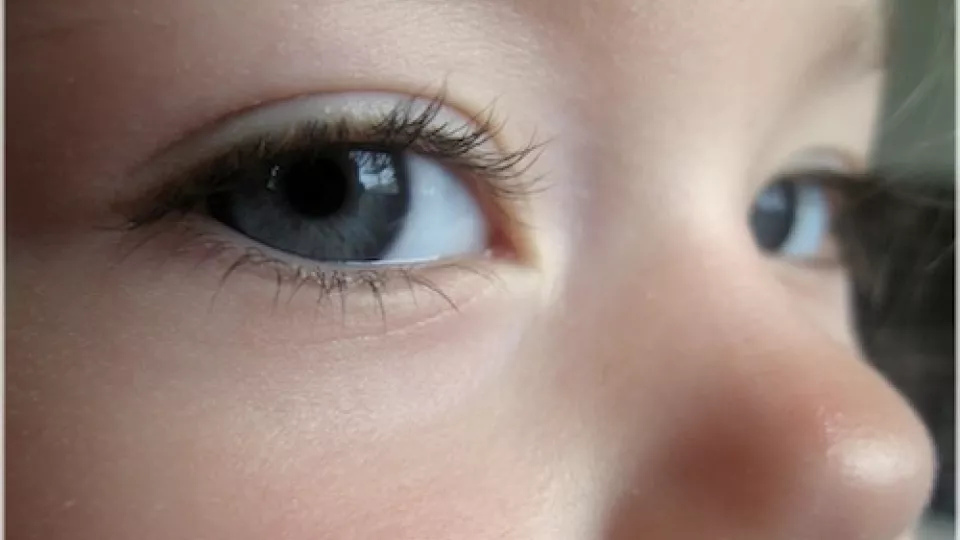It was not the former patients’ visual acuity that had been damaged; rather their eye motor skills – the eyes’ ability to follow moving objects.
“We observed that most of these patients were not able to move their eyes smoothly and steadily, but jerkily and fitfully. Eye movement like that makes it harder to focus on moving objects in traffic, for instance. It can also cause headaches and dizziness”, says reader Per-Anders Fransson at Otorhinolaryngology in Lund.
The study included 23 childhood cancer survivors, at the current age of 20 to 30, and compared them to 25 healthy people of the same age. Only a few in the first group experienced no visual disorders, headaches and dizziness. The degree of the problem appeared to be related to the degree of which the eye motor skills had been affected, which suggests damage to the central nervous system from the chemotherapy.
Majority still affected by side-effects from cancer treatment
It has been previously known that cisplatin, methotrexate, and ifosfamide – the types of chemo which the subjects of the study had been treated with – can penetrate the so-called blood-brain barrier, and thereby damage the nervous system. What has not been known, however, is whether the eye motor skills could be affected, and the consequences of that.
An average of 15 years had passed since the patients underwent cancer treatment. The study could not determine whether any of them had experienced side-effects which by now had worn off, but it’s clear that the majority of them are still suffering the effects of their treatment. Age, at the time of treatment, appears to play an important role: those who were youngest at the time of treatment were the most affected.
“A child’s brain has not completely developed, which makes it more susceptible to the influence of foreign substances”, says Thomas Wiebe, consultant in paediatric oncology.
He argues that for the time being, despite the risks, we must continue to use the medicines in question – after all, curing the cancer and saving lives is most important. However, the Lund University study reinforces the importance of coming up with new and better treatments. In the future, the new knowledge, and the diagnostic method described in the study will enable oncologists to pay closer attention to any side-effects, in which case it may be possible to reduce the dosage or change medications.
More focus on childhood cancer survivors needed
Thomas Wiebe also finds that Swedish healthcare needs to focus more on the growing group of childhood cancer survivors. Only a third of them are completely free from side-effects, while the rest experience anything from mild to severe effects from their treatment.
“Today, childhood cancer patients are monitored in paediatric clinics until they turn 18, but after that there is insufficient follow-up. We have introduced a ‘delayed effect clinic’ here in Lund, but it lacks sufficient resources, and the rest of the country has even less resources!”, he says.
Because the survivors of childhood cancer may experience problems not only with their balance and vision, but also with for instance cardiovascular diseases, fertility, growth and cognition, they presumably turn to various forms of care in search of help. If there was a good system for diagnosis and follow-up, they could receive the support they need right away.
“When it comes to balance and visual disturbances, there is an exercise programme that can significantly minimise problems. Simply being diagnosed is also valuable so you don’t have to wonder why you are experiencing things such as dizziness and fainting”, says Professor of Otorhinolaryngology Måns Magnusson.
Download article: Oculomotor Deficits after Chemotherapy in Childhood. By Einar-Jón Einarsson, Patel Mitesh, Peterson Hannes, Wiebe Thomas, Magnusson Måns, Moëll and Fransson Per-Anders, 2016. PLOS ONE
Learn more, contact
Per-Anders Fransson
Tel: +46 (0)46 17 17 70 or +46 (0) 17 17 05
Email per-anders [dot] fransson [at] med [dot] lu [dot] se (per-anders[dot]fransson[at]med[dot]lu[dot]se)
Måns Magnusson
Tel: +46 (0)46 17 17 96
Email: mans [dot] magnusson [at] med [dot] lu [dot] se (mans[dot]magnusson[at]med[dot]lu[dot]se)
Thomas Wiebe
Tel: +46 (0)46 17 82 84 or +46 (0)705 36 86 93
Email: thomas [dot] wiebe [at] med [dot] lu [dot] se (thomas[dot]wiebe[at]med[dot]lu[dot]se)
